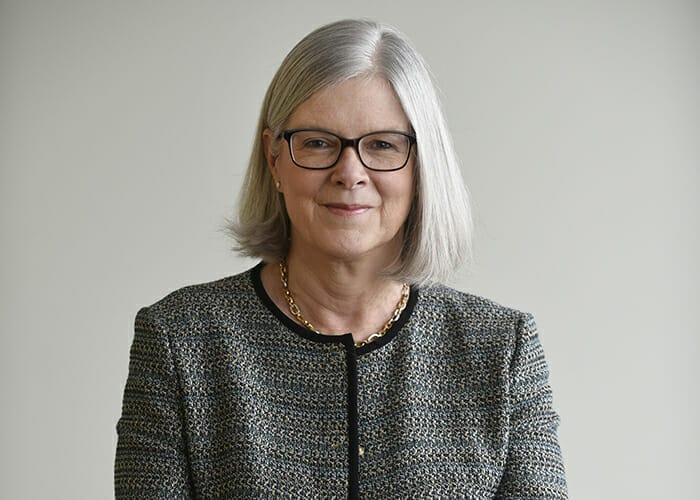The Toronto-based Colleges of Applied Arts and Technology Pension Fund, (CAAT), a scheme for employees in colleges across Canada’s Ontario province, celebrates its 50th anniversary this year. Yet much of the defined benefit fund’s most important milestones have occurred in more recent years.
In 1995, the plan spun out from the Ontario Municipal Employees Retirement System, which acted as trustee, to assume a jointly-sponsored pension plan governance structure and invest on its own. Back then, CAAT had only $3 billion in assets under management but now manages $C8.1 billion ($6.1 billion) and boasts an enviably healthy funded status, recently up from 110 per cent in 2016 to 113 per cent today.
“I think you can read from this it’s been a good year,” says chief investment officer Julie Cays, who joined CAAT 11 years ago from the Healthcare of Ontario Pension Plan, where she looked after the external manager program, now run in-house.
“We have had strong returns from public equity as well as private equity and infrastructure. Commodities and real-return bonds haven’t done so well, but these assets are an inflation hedge, and there hasn’t been much inflation,” Cays says.
Under her leadership, CAAT is continuing to evolve as it prepares for another significant shift in strategy. Fifty seven per cent of the portfolio is invested in return-seeking allocations to public and private equity, and 43 per cent is in liability hedging assets, comprising nominal and real-return bonds, infrastructure, commodities and real estate.
“These categories are not perfect. Real estate and infrastructure blur the lines between return enhancing and liability hedging,” Cays says of the asset classes that have characteristics and risk factors that fit into both parts of the portfolio.
Following the completion of a long-term asset liability study last year, which Cays says, “updated our return assumptions for the next 20 years”, CAAT plans to take 15 per cent of its assets out of public equity. Ten per cent will be invested in private equity, and the remaining 5 per cent will go into the real assets of infrastructure and real estate, increasing the real asset allocation from 15 to 20 per cent.
It’s a change of tack born in part from public markets’ focus on results, rather than on the long-term value creation CAAT favours, Cays explains.
“Public markets are increasingly short term and we have a long-term strategy,” she says. “It’s one of the reasons we like illiquid assets. We have a long-term investment horizon and a funding reserve and yes, I would say, our appetite for short-term volatility is fairly high.” CAAT has no tactical risk-allocation program.
Three-quarters of CAAT’s assets are actively managed.
“The active program has outperformed over the past 10 years, so it has been successful,” she says. Passive management “helps with the fees” but is also an important component of the fund’s portable alpha strategy. Passive investment is confined to part of the Canadian bond portfolio and a US S&P 500 equity exposure, with the beta from the US allocation underlying a portable alpha strategy.
“We use passive strategies structured within asset classes to manage the level of active risk exposure. We target beta like US equity, and then put hedge fund alpha on top.”
Small in-house team
Cays, who has an internal team of only six, outsources all the public allocations to external managers, counting about 15 mandates. The fund has a low turnover of managers and tends towards “larger mandates to help bring down fees”.
Some managers on the public side have been on CAAT’s books for the last 10-15 years and the fund shares a “broader relationship and ongoing dialogue” with a select few. The scheme has also employed an advisory firm to specifically help access the best GPs in private markets, a crucial part of reducing manager selection risk in building the allocations to private markets, she says. Here, CAAT invests either via funds or, increasingly and particularly in infrastructure, via co-investments.
“We like co-investment because of the cost benefits and not having to pay the fees we have to pay with fund investment. It also allows for more targeted investment. For example, we can look for inflation protection in our infrastructure portfolio,” she explains.
The real-estate allocation is largely Canadian, accessed through funds, although Cays says CAAT is branching out into real-estate funds in Europe and the US now, too.
Sharing ideas and governance
CAAT’s governance structure is shaped by its status as jointly governed and is, Cays says, another pillar of its success. It means employers and employees share responsibility for the stability and security of the scheme, in a model that fosters co-operation and flexibility, and encourages prudent and responsible decision-making.
“Our board of trustees is appointed from the employer and employee side and some of them do have an investment background and are a huge help,” Cays explains. “They ask excellent questions and allow us to be nimble in terms of approvals.”
Cays also says sharing ideas with other Canadian pension funds, facilitated particularly by the active role of the Pension Investment Association of Canada, for which she is a past chair, is a contributor to CAAT’s investment success.
“We all know one another; we share ideas and collaborate. The difference between CAAT and other plans, I suppose, is that many Canadian corporate plans are worrying more about solvency and are more liability driven than we are. We have funding reserves, and can do more in the long term.”
What do the next 50 years hold? As the fund grows, Cays says, it will start to build internal expertise, rather than use external managers. But rather than be drawn on what global investment hazards lie in wait, her focus is on the risk of changes in contribution levels – such as beneficiaries living longer, trends towards part-time work and the shift towards defined contribution plans – affecting the plan.
“This is what we have our eye on going forward,” she says.




its a nice post